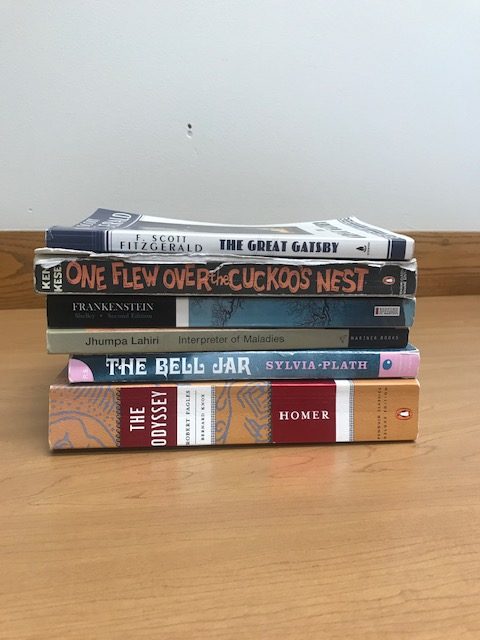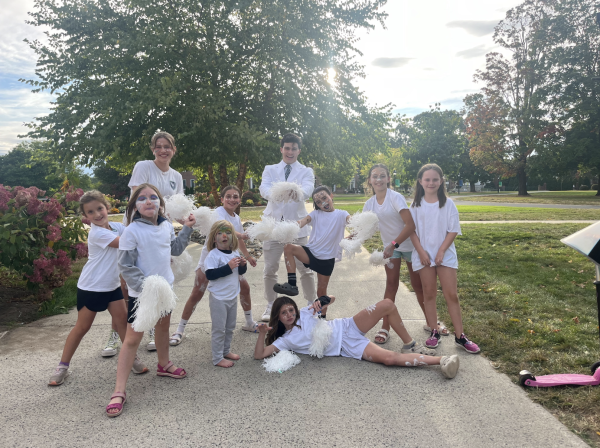Is the English Curriculum Diverse Enough?
While Williston has always strived to bring a diverse group students to the campus, this isn’t always represented in the novels students read in their time here.
Out of all the books the English department reads in the 2020-21 school year, 30 of 44 (68%) of protagonists are white; 4 of 44 (9%) of protagonists are Black, seven of 44 (16%) of protagonists are of other races. Three of 44 (7%) of books taught have an unclear or no physical protagonist.
Some of the books were chosen to fit the themes of each class. An example of this would be books surrounding the theme of coming of age in the ninth-grade curriculum. Catcher in the Rye, for example, while it is an American classic, also contains lessons that the school wants to pass onto the students. There are no non-white characters in the book.
Junior Cristina Negron believes that the limited diversity in the novels reflects the minority of Black and Hispanic students on campus, many of whom may also struggle to connect with the novels.
The novels in the department that include Black or Hispanic protagonists are Raisin in the Sun, La Linea, Between the World and Me, The Underground Railroad, The Autobiography of Malcolm X, and The House on Mango Street.
Cristina went on to explain how for some students it is going to be more difficult to relate to the protagonist because of the racial differences. In her opinion, there are two ways to fix that, by either changing the curriculum or telling those students it will be more difficult.
“If it’s hard for them to relate to those character because if that’s the case then you need to either alter the curriculum or just tell students that some things are going to be hard and they are going to just have to deal with it,” she said.
Continuing her point, Cristina addressed the difficulty in finding novels in which the protagonist is of Asian descent.
“I think that it’s actually harder to find books with an Asian protagonist that can be taught in an AP English class,” she said. “I think that if they tried hard enough they could find at least one or two they could work into the curriculum, but I feel like it’s not a priority for them.”
According to Mic, novels that could be taught in high schools with Asian protagonists include America Is the Heart by Carlos Bulosan, The Joy Luck Club by Amy Tan, and The Namesake by Jhumpa Lahiri. Lahiri’s short story collection, Interpreter of Maladies, is taught in 9th grade.
Cristina said at Williston, the discussion about non-white protagonists always revolve around their race and their struggles as a minority in America. There should be novels taught, she said, with non-white protagonists where the story does not have to be a racial struggle.
“I have not read a book at Williston that has the main character going through what we would call an everyday, teenage, coming-of-age struggle,” she said. “I think that it almost always has to do with their race and then that becomes the main theme we talk about … they should find books where that is not the case,” she said.
Senior Alexa Kerr agrees that, in her opinion, there is not a sufficient amount of diversity among the protagonist and the challenges they face.
“Most of the protagonist that we read about are white, which is a problem in and of itself, and also most of the books we read are written by white people,” she said.
When a novel revolves around a non-white protagonist, especially a Black protagonist, the conversation about the novel is solely about their race, Alexa said.
“When we read books that are centered around Black protagonists, their story almost always revolves around them being Black, either being slaves or the hardships they face in the world,” she said.
In Alexa’s view, this become problematic because the character is only defined by the struggles they face because of their race, which does not happen in the novels where the protagonist is white.
“Their whole identity becomes their struggles, and that’s all we talk about at Williston, we don’t get books with diverse main characters [where] their story does not revolve around their skin color,” she said.
Some of the novels Cristina and Alexa are referring to include The Autobiography of Malcolm X, The Underground Railroad, and Between the World and Me.
Alexa said it can be difficult for many students to relate to the characters and their struggles because they do not racially identify with them.
“Everyone should be able to see themselves in characters that they read about in books, and when all we read about is white people that’s obviously going to be really hard for anyone who does not identify with the race of the characters,” she said.
Sarah Sawyer, in her fifth year as the Head of the English Department, has tried to work with the texts that students read to find books that fit within the curriculum but are also teachable.
“I think that from when I started working here something that we’ve been working on is switching out certain texts that we feel are out of date,” she said. “It is difficult to find teachable books…there’s a Venn diagram that you have to look for: if this is a teachable book [and if] this has themes that are relevant and appropriate for the age.”
Sawyer acknowledges the statistics on the texts that are read through the grades, however she also believes that is a diminutive way to look at the literature.
“I think that is a reductive way to look at literature in a way,” she said. “I think it would be reductive to think that a person who wasn’t of that race cannot learn from them.”
Sawyer continued to speak about how in the American novels with POC and BIPOC protagonists, their story revolves around their race because that is the narrative that plays out in American history.
“I think that is the nature of American literature that contain Black characters, often the story is about their race because that is the story of Black people in the United States,” she said. “Literature is reflective of the time that we live in, and so books that we have talked about for twenty years, we talk about differently today.”
Sawyer believes that while not all students may be able to physically relate to the characters, that they should be able to find other ways to connect to the novels and that it is up to the reader to decide what they get out of a book.
“I think that they should be able to because that’s what literature is. As I say in my classes, we only get one life,” she said, adding, “I think that it would be a failure not [of the literature] but of the imagination, if you couldn’t [relate to the text].”
Emily is a senior from Easthampton MA. She likes to play soccer, squash, and track. She also likes to participate in the theater department. In her free...













